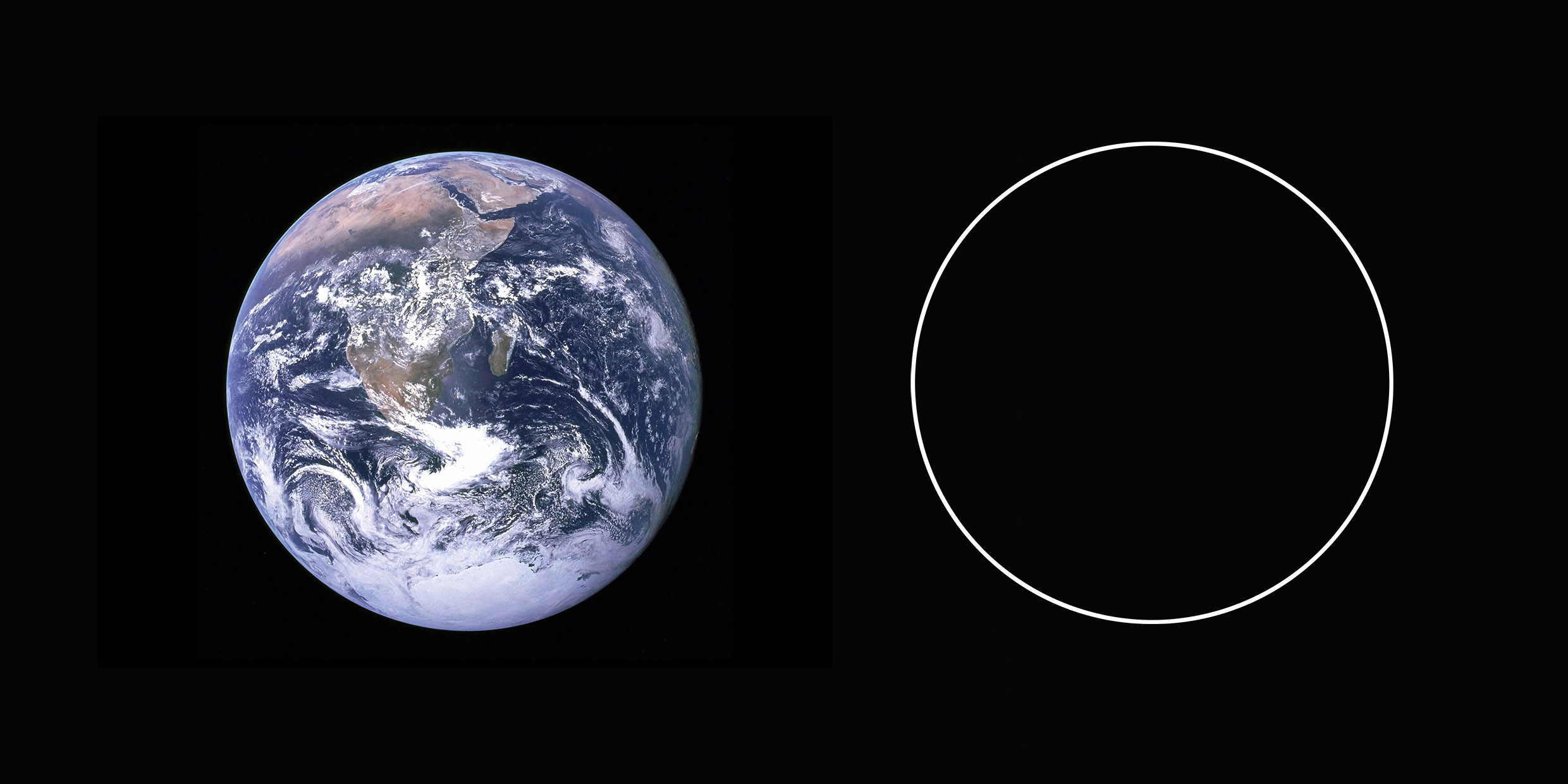Originally published 28 June 1999
Twenty-two hundred years ago, in the city of Alexandria at the mouth of the Nile River, a fellow named Eratosthenes drew a circle on papyrus and said, “This is the Earth.”
Then he drew a few straight lines to represent the sun’s rays and the shadows of vertical sticks at Alexandria and a place called Syene. With simple geometry he calculated the size of the Earth.
And got it dead on.
Figuring out the size of the Earth was an impressive achievement, but something even more important happened when Eratosthenes drew that circle. He let a pure mathematical circle represent this wonderfully complex world, with its oceans, clouds, mountains, valleys, vegetation, animals, and human societies. Just a circle scribed with a compass. He said: “This is the Earth.”
Eratosthenes established the power of mathematical abstraction as an aid to discovery, when linked with precise quantitative observations. His deduction of the Earth’s circumference was the first example of what we would today recognize as science.
The key to Eratosthenes’ success was not trying to understand everything at once.
For calculating the size of the Earth the only aspect of the Earth that he needed to think about was its sphericity. There’d be time enough later to tackle other details, if and when his successors could figure out how.
The essence of science is restraint. Humility in the face of overwhelming complexity. A willingness to say, “I don’t yet know.”
Centuries after Eratosthenes, Copernicus and Kepler abstracted the Earth even further. As a dot. They reduced the entire planet to a mathematical point. And with that they successfully calculated the orbit of the Earth around the Sun.
Newton gave the dot a property called mass, and revealed the secrets of gravity.
Geologists later discovered how the mass is distributed inside the Earth. And so it goes. One step at a time. One layer of abstraction added on top of the other, slowly building up a reliable picture of the world.
A spectacular example of the power of abstraction is described in a recent article in Scientific American called “Mapping the Universe,” by cosmologist Stephen Landy. He describes attempts by astronomers to map the positions of millions of galaxies in three dimensions over huge parts of the sky.
The two-dimensional position of the galaxy on the sky can be determined with a photograph, upon which a nearby galaxy may show up as a spiral of stars, and a faraway galaxy as a blurry dot.
The distance to a galaxy — the third dimension — can be found from a spectrum of the galaxy’s light. Because the universe is expanding, the galaxies are moving apart. The further a galaxy is from us, the faster it is racing away. The speed can be determined by the astronomical equivalent of a highway trooper’s radar gun — as a shift in the wavelengths of the galaxy’s light.
The Scientific American article is illustrated with a three-dimensional map of 3 million galaxies covering 15 percent of the sky. Each galaxy, or group of galaxies is represented by a dot. This is abstraction of the most extraordinary sort: Each dot represents a system of hundreds of billions of stars, each star perhaps with planets, each planet as richly textured as the worlds within our own Solar System.
What can possibly be learned when all the details except the position of a galaxy are ignored?
It turns out that galaxies are distributed in space in clumps and chains, and this structure must surely have a physical cause. From the nature and scale of the clumping, cosmologists hope to discover more about the early history of the universe and the forces and energies that gave the universe its form.
Here is Stephen Landy on the kinds of questions that maps of the galaxies might help us answer: “What did the universe look like at the dawn of time? How did it grow and develop into what we live in today? What forms of matter, both mundane and exotic, does it contain?”
These are among the most profound questions we can ask about the universe, and it is part of the unknowable mystery of the world that a map of mere dots can help us answer them.
We place a dot on the map and say: “This is a galaxy.” In that act of abstraction we momentarily forego a rich diversity of worlds — blazing stars, planets spinning in dusty spaces, clouds heaped on craggy peaks, birds folding their young into a feathered nest.
And what if someone asks: “But what are the deepest secrets of the stars, the spinning planets, the heaped clouds, the feathered nest?” We answer: “I do not know.”
Not yet.
But in the meantime, we layer on another skim of knowledge, modest in our expectations of knowing it all. Scientists sacrifice omniscience for reliability, and look to the poets and mystics to tangle with the world in all of its glorious, ineffable details.



